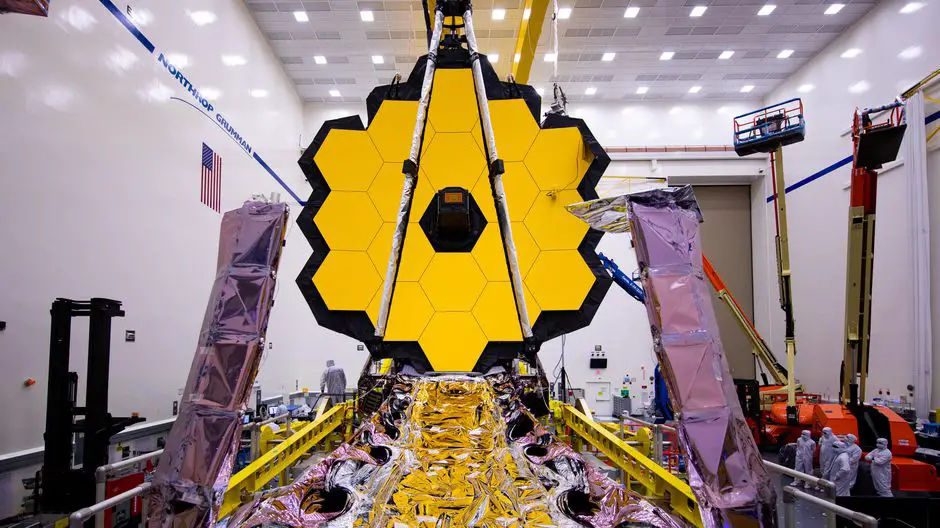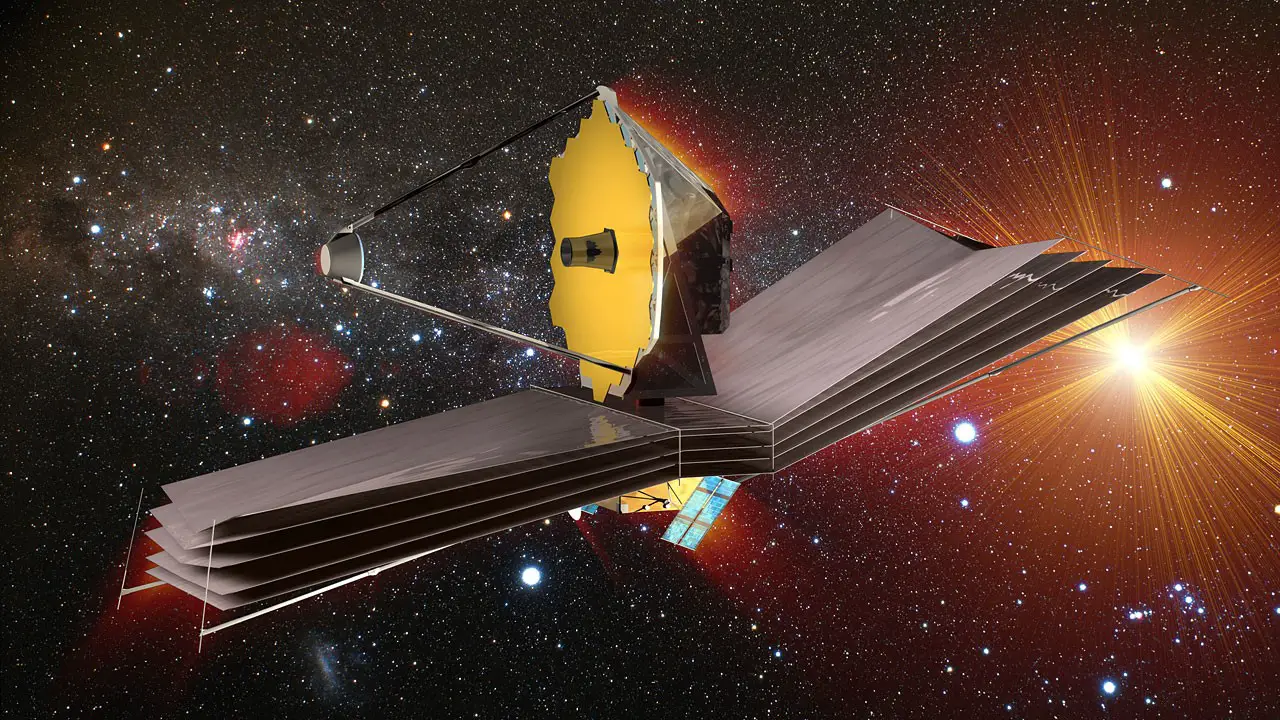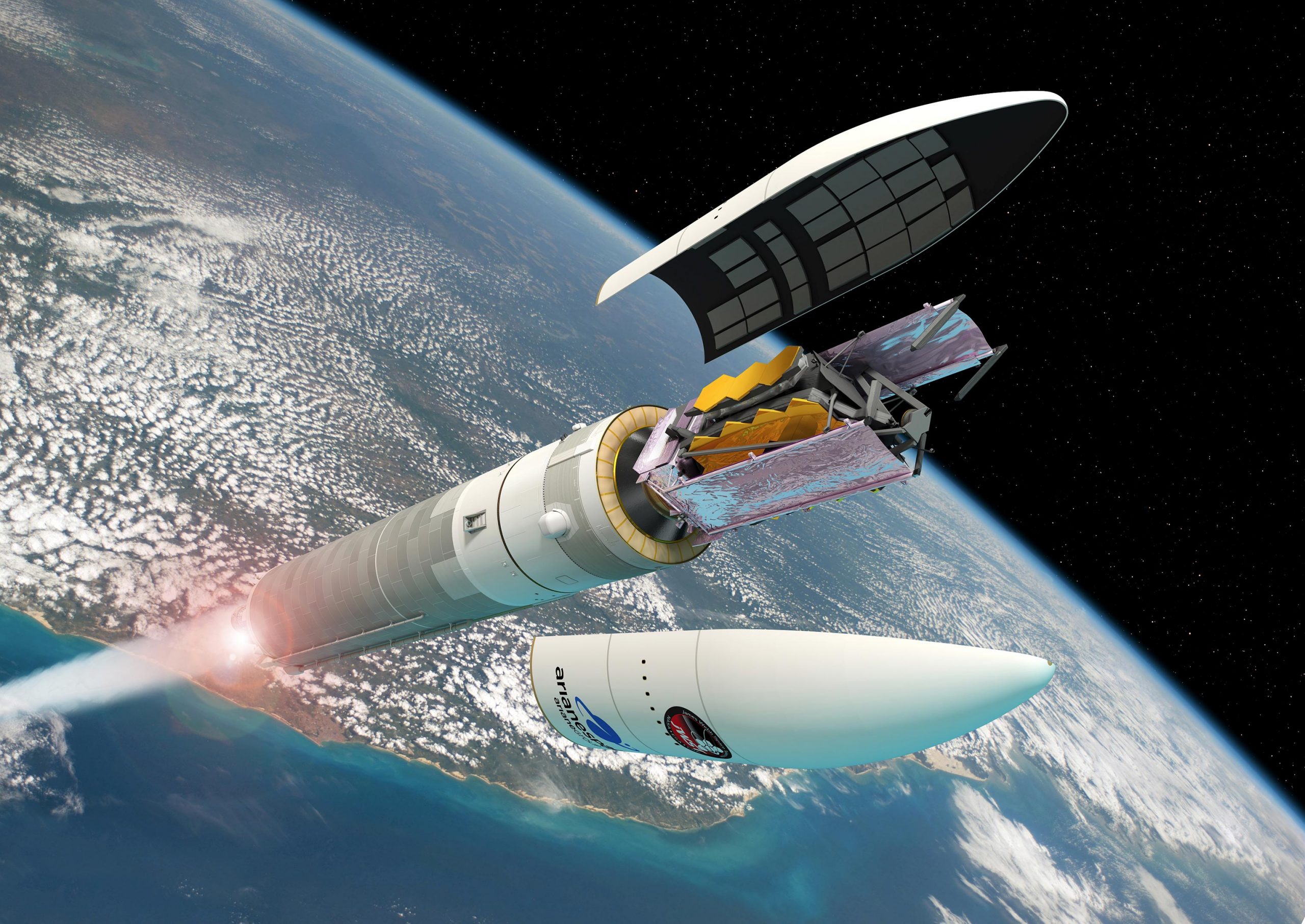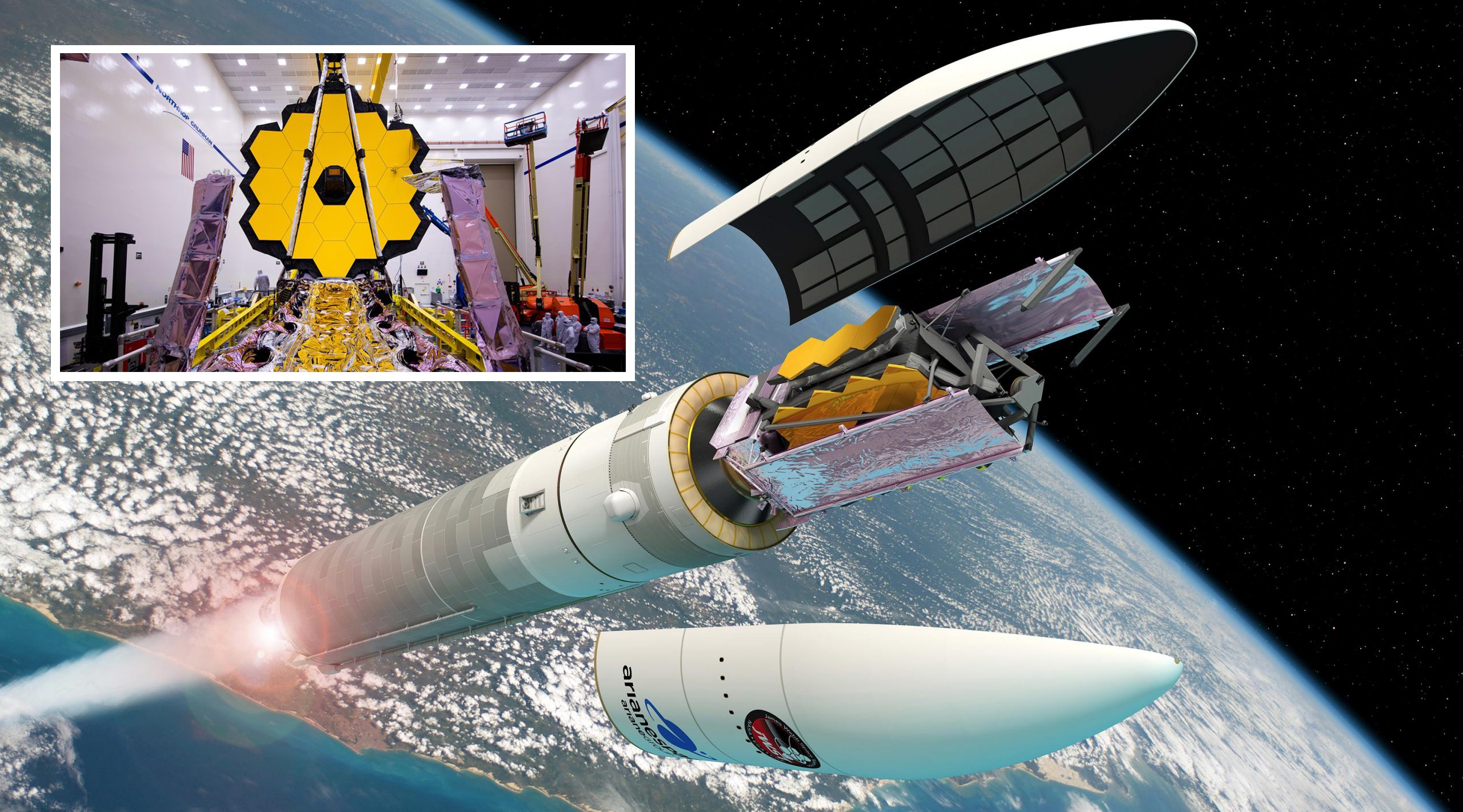NASA has postponed the launch of its James Webb Space Telescope until at least Christmas Day because of bad weather at the launch location on South America’s northeastern coast, the agency announced on Tuesday (Dec 21).
In addition to the two-day delay from an earlier intended launch window of December 22, NASA said electrical communications issues between the launch vehicle and its cargo prompted the 24-hour weather delay at Europe’s Spaceport in French Guiana.
Dec. 17 marked the completion of the Ariane 5 rocket’s cargo compartment encapsulation of a large infrared telescope. Between 7:20 and 7:52 a.m. EST (1220 to 1253 GMT) on Saturday, the rocket is ready for liftoff.
On schedule, following a 26-minute flight into orbit, the US$9 billion instruments will be released from the rocket. Once it reaches its goal, the Webb telescope will cruise for a month to a distance of nearly four times the distance to the moon.
A 30-year-old telescope called the Hubble Space Telescope has been orbiting the Earth at 340,000 miles per hour for the last 30 years, in contrast.
Astronomers’ comprehension of the cosmos and our role in it will be revolutionized by Webb, which is named NASA’s leader during the 1960s.

Astronomers will be able to see through dense clouds of gas and dust where stars are created because to Webb’s infrared capabilities, while Hubble has focused on optical and ultraviolet wavelengths.
Gold-coated beryllium metal segments make up the telescope’s main mirror, which has a larger surface area than Hubble’s, allowing it to see farther into the past than Hubble could.
For the first time since the Big Bang, scientists claim, they can see the universe as it was only 100 million years after the event that sparked its expansion, an estimated 13.8 billion years ago.
Using Webb’s equipment, astronomers may investigate the atmospheres of the many recently discovered exoplanets — celestial bodies circling faraway stars — in search of signs of life, as well as view nearby worlds like Mars and Saturn’s ice moon Titan.
The telescope is a result of a multinational effort spearheaded by NASA and including the European Space Agency as well as the Canadian Space Agency. In this case, the principal subcontractor was Northrop Grumman Corp. The European contribution includes the Ariane launch vehicle.

NASA’s James Webb Space Telescope was originally feared by some scientists that it might never launch.
James Webb’s Space Telescope is the result of decades of study by scientists and engineers who believed that the most powerful space telescope ever would never lift off from Earth.
Astronomers will be able to examine the atmospheres of planets that orbit distant stars using the $10 billion telescope, which is expected to launch as early as December 25 and is intended to view the light from the first galaxies to emerge after the Big Bang.
Despite this, some astronomers find it hard to believe that the launch is truly going to happen given the number of delays.
Megan Bedell, a researcher at the Flatiron Institute’s Center for Computational Astrophysics, says, “It is amazing to think that this wonderful observatory that we have all been looking forward to for years will be up and running soon.”
For decades, scientists have been working on a massive telescope.
Before the legendary Hubble Space Telescope was deployed in 1990, plans for this telescope were in underway.
When Garth Illingworth was working at the Space Telescope Science Institute in Baltimore during the 1980s, he was the deputy director. One day, Riccardo Giacconi walked into the office and informed him it was time to start thinking about who would succeed Hubble as the head of the European Space Agency.
“‘Ah, no, we can not do that,’ I said. ‘Hubble is our only focus!’ “The former UCSB student and current UCSB faculty member Illingworth agrees. In response to this, he responded, “Trust me, this is going to take a long time.”
It is safe to say that X-ray astronomer Giacconi, who won the Nobel Prize for his work, was correct.
With just three individuals chatting about it and drawing ideas on scraps of paper, Illingworth recalls the early days of computer programming back in the 1980s. There was a need to look far into the future and ask, “What is possible, but also makes us a great step beyond our existing telescopes?”
When the Hubble project came to an end in 1990, a team of experts recommended building a big infrared, very cold telescope as a replacement for the space telescope. While the project was still in its early stages throughout the 1990s, the telescope was given its present moniker in 2002 in honor of a previous NASA administrator. In 2004, work on the telescope’s main mirror and scientific equipment got underway.
The final product of all that effort is a three-story telescope with a 21-foot-wide gold-plated mirror. An enormous sun shield, the size of a tennis court, keeps it at -370 degrees Fahrenheit, which is very cold. To fit inside a rocket, the complete telescope is folded up like an origami crane, and it will have to unfurl itself in space, a million miles from Earth’s surface.
James Webb is unlike any previous expedition, adds Illingworth. “There is no one else like James Webb. In many situations, the technologies we develop are one-offs.”

A mission ‘haunted’ by cost pressures
Originally, the telescope was planned to cost between $1 billion and $3.5 billion and deploy between 2007 and 2011. Considering all of the unknowns and necessary technological progress, Illingworth felt that such a budget was just unattainable. Even though there was considerable pressure to keep prices down at the time, he claims.
A lot of political turmoil resulted as a result of it over eight years, he adds. The anticipated launch date was continually delayed, and the associated expenditures increased.
In 2011, the House of Representatives decided to eliminate what seemed to be a massive waste of money. To rescue it, scientists and space enthusiasts enlisted the help of their fellow citizens. Hubble’s “wonderful,” “this is our future,” “we would want that mission,” wrote teachers and schoolchildren, according to an interview with Illingworth.
After years of planning and nearly a billion dollars invested, astronomers worried their project would be terminated, as happened to the Particle Physics Superconducting Super Collider in 1993.
A compromise was reached between Congress and the project’s proponent, former Maryland Senator Barbara Mikulski (D), and construction on the telescope resumed in 2018, with a revised launch date and an $8 billion cost ceiling.
As of 2018, an independent review board projected the overall cost of supporting the revised 2021 launch date to be $9.66 billion.
‘A really spectacular scientific instrument’
For years, some members of the astronomy community have complained that so much of the scientific money has been spent on this one, massive project. James Webb Space Telescope (JWST) has been referred to by the journal Nature as “the telescope that ate astronomy,” and in 2010 Science warned that “a project designed to transform astronomy now threatens to undermine NASA’s whole space sciences program.”

“Let us kill this,” reasoned several astronomers. Then we will be able to pay for our operations,’ he said, before revealing his true motives “According to Illingworth, this is the case.
Astronomers across the globe, meanwhile, are just praying that the telescope will launch safely and unfold in orbit the way it is meant to once the contract has been struck.
According to Lisa Storrie-Lombardi, director of the Las Cumbres Observatory: “I cannot think that most of the astronomical community is not simply waiting to see it launch and really, really hopes that it works. Due to its potential to be a very powerful scientific tool if it succeeds.
The community is already discussing the next great space telescope while they wait, hope, and fear for this one.
Earlier this month, a panel of experts from the independent National Academies of Sciences, Engineering, and Medicine advised developing a massive spacecraft that might be launched in the 2040s to explore planets surrounding distant stars for indications of life.

